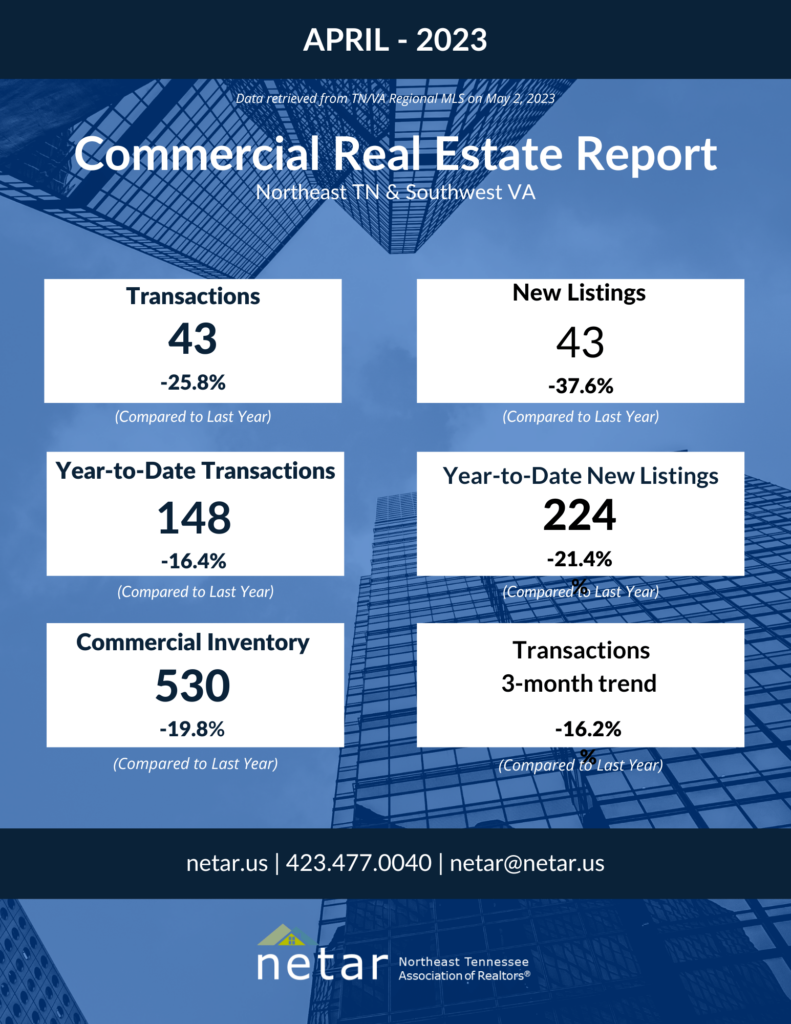Local commercial real estate weathering economy’s volatility
Don Fenley
GRAY – Despite a transactions slump, concerns over bank reactions to stress from a spat of bank failures, and inflation fears the local commercial real estate outlook is positive. Here’s the 30,000-feet view.

The area has experienced steady economic growth in recent years, and this has created a strong demand for commercial real estate. Currently, the vacancy rates for commercial properties in the area are low, and this trend is expected to continue.
One of the key drivers of commercial real estate demand in Tri-Cities is the region’s strategic location. The area is situated at the intersection of several major highways, which makes it a prime location for businesses that need to transport goods and services. Additionally, the region’s low cost of living and high quality of life makes it an attractive destination for businesses and professionals alike.
As the economy continues to grow and the demand for commercial real estate in Tri-Cities remains strong, it is likely that property values will continue to rise. This could present attractive investment opportunities for those looking to enter the commercial real estate market in the area.
The short-term view is messier.
April’s Northeast Tennessee Association of Realtors (NETAR) Commercial Market Report and transaction tracker shows negative numbers across the board. But it’s not all bad news. For instance, although the three-month trend comparison lags last year, it has seen steady growth since the first of the year. It’s one of those cases where progress is the decline of the rate of decrease.
The most active sectors were industrial, office, retail-commercial and multi-family, which continue to be in the center of a vortex that consumes a lot of oxygen in the local commercial market.
Jerry Petzoldt, chair of the NETAR Commercial Committee, said the industrial sector is seeing increasing pressure. “It suffers from the same inventory shortage dynamic that we see in the residential sector. It’s driving higher rents and prices for those industrial listings.”
Progress on the submarket level is often overlooked, but it’s important because small businesses are at the core of local economies. One local city’s retail status was benchmarked when the economic development department took to the streets and for an inventory of small businesses in mixed used centers. John Rose, Economic Development Director for Kingsport, said they counted 246 in the walking tour of centers with two or more units. The icing on the cake for the commercial real estate walkabout was those centers had a 91 percent occupancy rate.
So far this year, the multi-family has accounted for the most locally tracked transactions (28) followed by office (22) and retail commercial (21).
Residential investment properties – both single-family and multi-family – have been active. The number of single-family investment properties has declined during the past two years, while the number of apartments and rents have increased, and more is on the horizon.
There has been a recent decrease in multi-family and rental demand. Some apartment complexes that used to have waiting lists have dropped that notice from their websites. Others are offering incentives for new renters and referrals. And the response to some of the build-to-rent townhome projects has yielded only half occupancy.
The region’s labor market remains robust and has yet to show signs of softening. Consumers are tightening the purse strings, but not to a point that has retailers concerned.
So far this year the active commercial inventory on NETAR’s Commercial Multiple Listing Service (CMLS) and Flex are down almost 20%. New listings are down 37.6%, and year-to-date listings are down 21.8 percent.
NETAR is the voice for real estate in Northeast Tennessee. It is the largest trade association in the Northeast Tennessee, Southwest Virginia region, representing over 1,800+ members and 100+ business partners involved in all aspects of the residential and commercial real estate industries. Weekly market reports and information for both consumers and members are available on the NETAR website at https://netar.us
